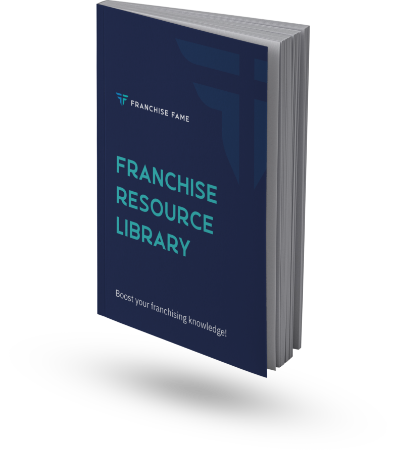A franchise budget is the cornerstone of managing your franchise’s finances and cash flow. Although numbers may not be your strong point, creating a budget for a franchise is an instrumental part of your business’ success. It’s a crucial part of your business plan before you even get started. And it’s also important.
This is irrespective of whether you’re starting out as a franchisee or if you’re an experienced franchisor who has gone through a troublesome sales period. With this in mind, we explore what a franchise budget is, why it’s so important and how to go about creating one that’s best suited to your franchise business needs. Let’s get started.
Table of contents:
What’s a franchise budget and what are its main constituent parts?
A franchise budget, much like a business budget, is a document in which you set out your business’ financial performance based on past successes or challenges. It looks at three primary parts: sales and revenue, costs and expenses and finally, profits. We break each one down a bit further below.
Sales and revenue
Simply put, this is all the money that’s coming into the franchise business as a result of your sales activities. It doesn’t matter whether you’re selling goods or providing a service, to anticipate your sales and revenue figures, consider looking back at the past year’s figures. Once you’ve got the general gist of what your business can expect to earn on a monthly, quarterly or annual basis in the coming year, remember to be conservative with your projections.
Total costs and expenses
As anticipated, these refer to the money going out of your business. But it’s worth breaking them down further. For example, total costs and expenses can be broken down into fixed, variable and semi-variable types.
- Fixed costs remain constant throughout the year irrespective of business performance. Examples include rent, utilities and insurance.
- Variable costs will fluctuate. As such, they can include the cost of materials and products, inventory (stock), freight and others.
- Semi-variable costs are primarily fixed costs that have the potential to fluctuate as a result of the levels of business activity. For instance, salaries can be fixed but bonuses can be semi-variable because they are only allocated once or a few times a year. Other examples include the costs of marketing and advertising and telecommunication.
Also worth noting here is that as a franchise business, you’ll also need to cover management service fees or royalty fees. These can be either fixed or variable and it’s worth getting absolute clarity on this point prior to getting started. In some cases, these fees will be a percentage of sales (variable) and in other cases, it will be a set amount (hence, fixed costs).
Loans are another expense or cost to factor in. In particular, you’ll have to think about the fixed amount you have to pay back on a monthly basis.
Lastly, you should also factor in general expenses that may include accounting fees, bank charges, general expenditures, legal fees, motor vehicle expenses, repairs and maintenance, software, subscriptions as well as training and development.
Profits
The final component is working out your profit. This is quite a straightforward calculation as you subtract total costs from total revenues.
Why you need to create a franchise budget
Before we delve into the “how” of creating a franchise budget, let’s look at some of the reasons “why” it’s such a necessary aspect of conducting a healthy franchise business. Here are the top reasons to consider:
- To avoid spending more than you earn
- To keep everyone working towards the same goals
- To keep everyone in your organisation accountable
- To help scale your franchise business
- To ensure that you stay on-track and implement continuous improvements
- To help you track your progress
- To help evaluate the cost of unit development (for franchisors)
- To help you with business management
- To improve efficiency
- To identify trends and learn to anticipate needs
When is the right time to create your franchise budget?

Now that you know why creating a franchise budget is so important for the smoother operations of your franchise business, you may be wondering when is the best time to create this budget?
In general terms, the answer to this question is doing so on an annual basis. You can either start at the beginning of the financial year (which is April) or you can start at the beginning of the calendar year.
However, what’s noteworthy is that any time is a good time to start and it’s better to start now (late) than never.
Also important is that monthly budgets are also worthwhile to create and you might think of working on those too. They operate on the same principle as an annual budget. However, they’re much more refined, focused and specific to each particular month. Having your financial information broken down on a monthly basis is a great way of helping to manage your budget and business on a micro level.
Steps to creating a business budget
And now we come to the all-important steps to creating your franchise business budget. Here are five simple steps to follow to ensure you get it right each and every time.
- Plot within a conservative range
Start out by coming up with a realistic estimated figure for the current year’s revenue. When doing this, look at the past year’s revenue figures and plot within a conservative range.
- Plot your expenses against predicted revenue
As mentioned above, you should factor in your expenses. But expenses or costs should be split up into fixed, variable and semi-variable ones. When you have a list of these expenses by summing them all up, you need to subtract them from your anticipated revenue mentioned in Step 1 above. This will help you determine your gross profit margin. If your gross profit margin is in the negative, you’ll face challenges with cash flow and it’s a clear indication that your expenditure is too high. As such, you may need to take cost-cutting measures to rectify this from the start.
- Take holidays and seasonal factors into consideration
The next step is to consider your particular type of business and when it performs best. Unless your franchise is an all-year-round type of venture, you’re likely to experience seasonal fluctuations. A garden service franchise, for example, is much more likely to get more work over the summer as opposed to winter. So keep this in mind when creating your budget.
- Monitor trade patterns
It’s also worth considering doing trade pattern comparisons with your other franchise peers, if this is possible. This will help you see whether you’re on a realistic path.
- Set aside financial resources for unexpected expenses and emergencies
Finally, it’s always wise to set aside some funds for emergencies and unforeseen circumstances. Whether it’s a burst geyser at your office premises that needs replacing, these things do happen and you should be prepared for them.
In conclusion
Now that you have an idea of how to create your franchise business budget, you’re one step closer to managing and running your own business in a financially healthy way.
Of course, if you’re still looking for franchise opportunities, and in particular, low-budget franchise opportunities, then don’t hesitate to take a look at our franchise portal.
It is extensive and detailed and it can really help you narrow down your options to find the most suitable business opportunity for you.







